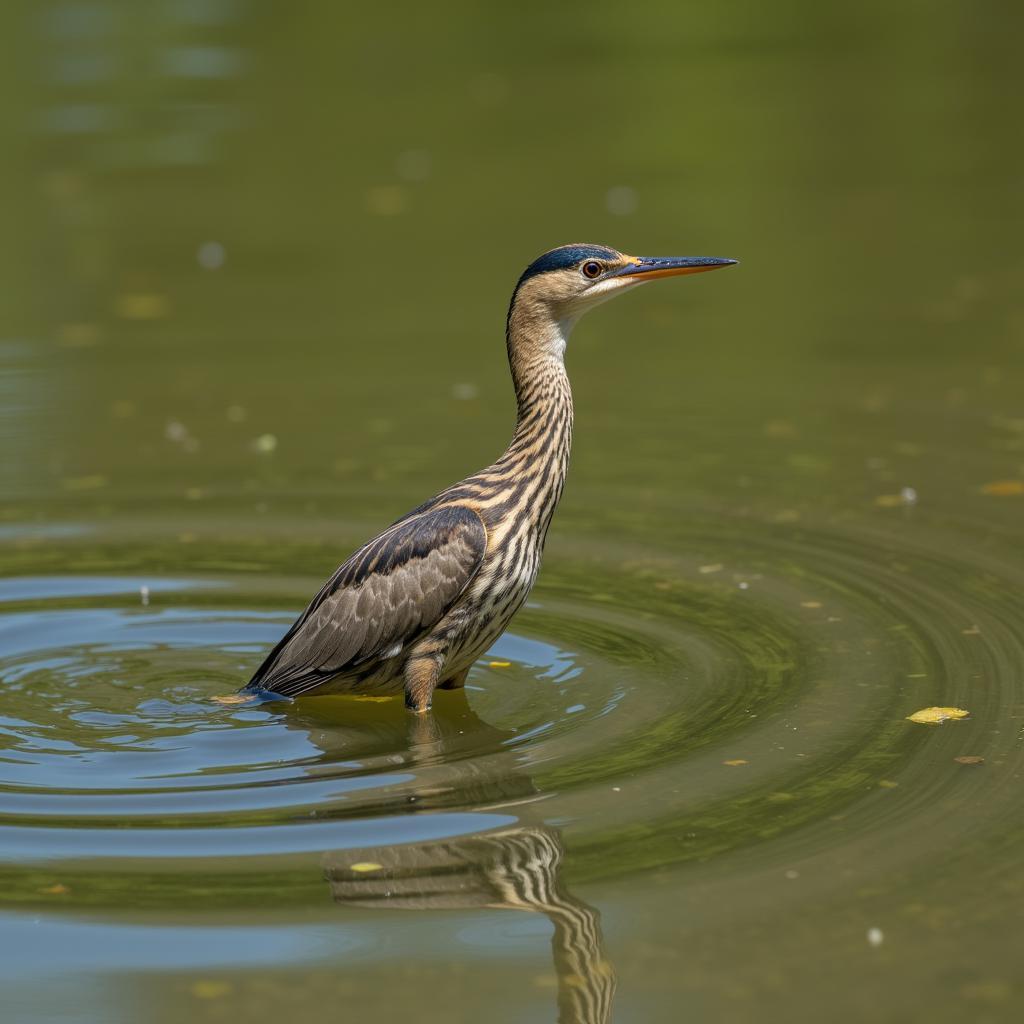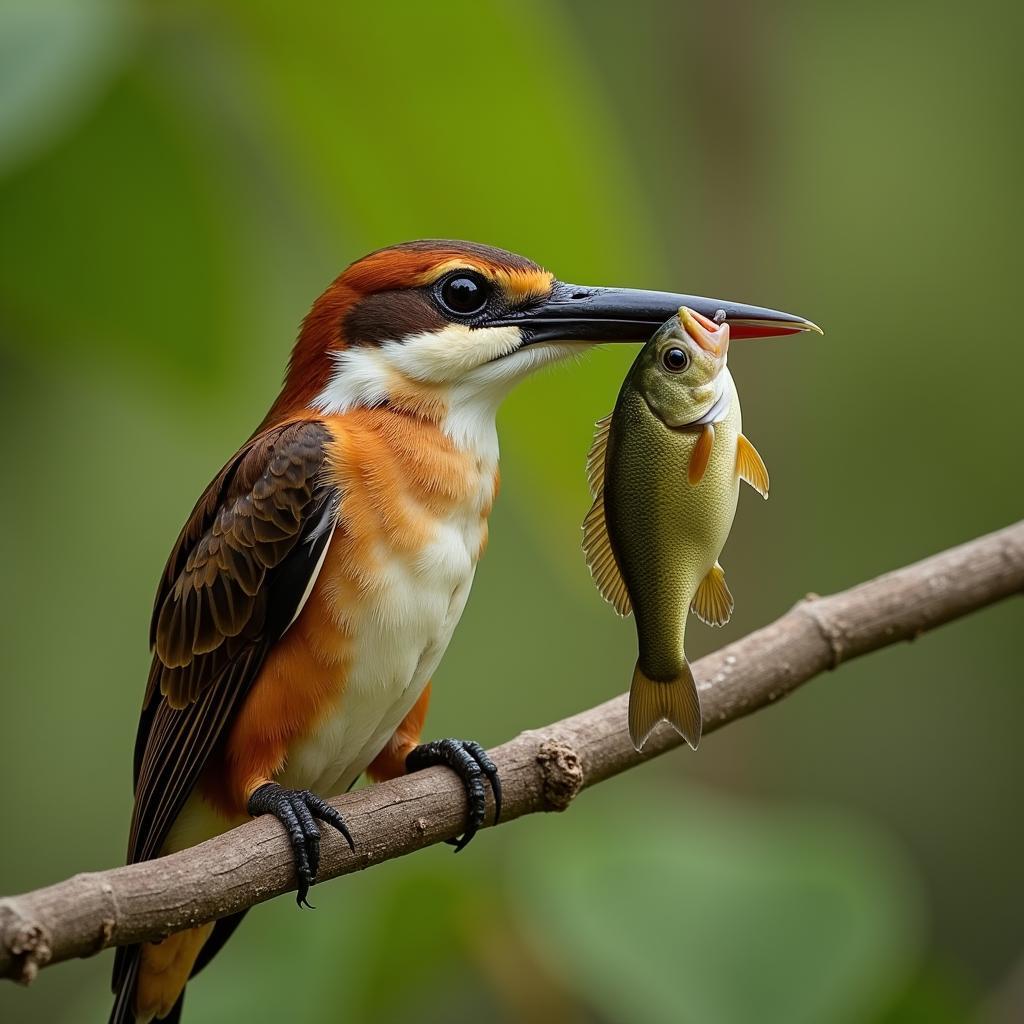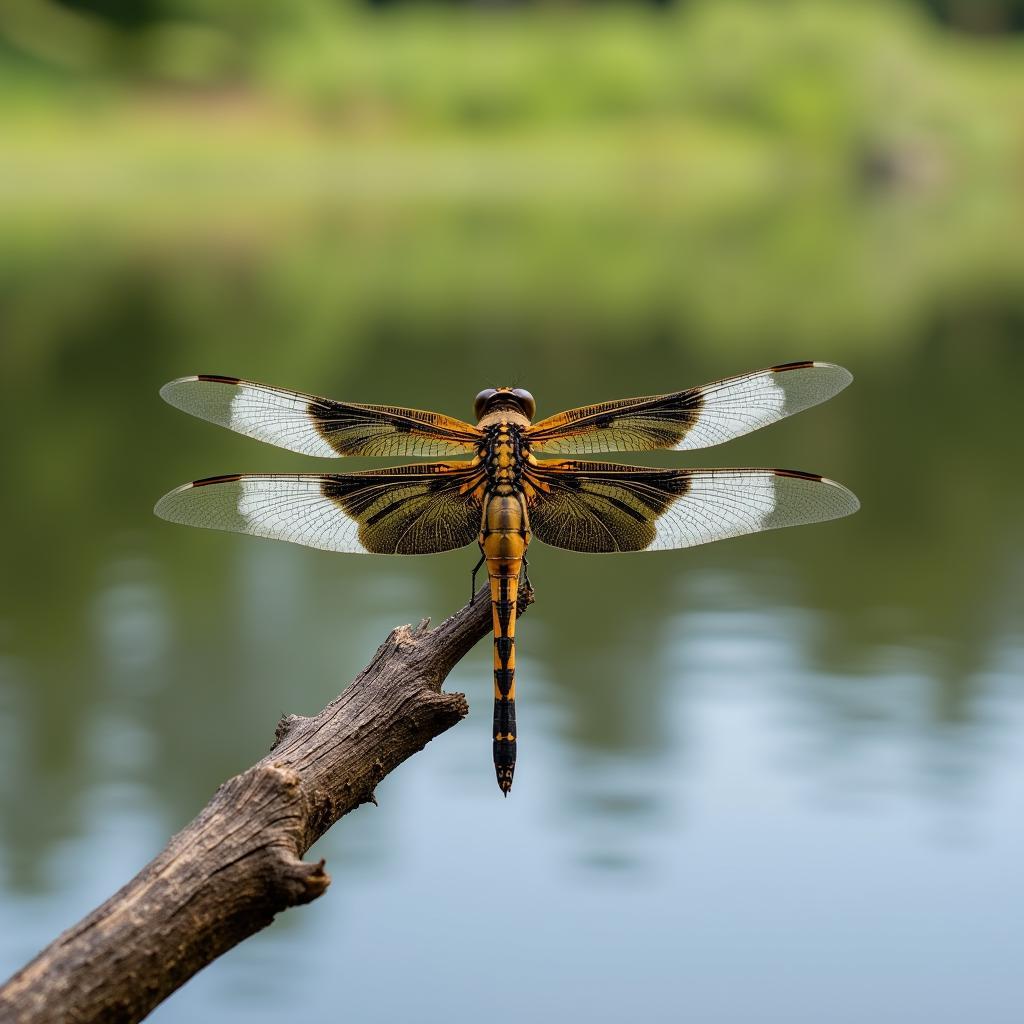African Darters: Spearfishing Specialists of the Waterways
African Darters, also known as snakebirds, are a captivating group of waterbirds found throughout sub-Saharan Africa. These birds are easily recognizable by their distinctive long, slender necks and pointed bills, which they use for spearfishing. With their sleek, serpentine appearance when swimming, they truly live up to their nickname.
 African darter submerged in water
African darter submerged in water
Masters of Disguise and Underwater Propulsion
African darters are often found perched on branches overhanging water bodies, where their cryptic plumage helps them blend seamlessly with the surroundings. Their predominantly black or dark brown feathers provide excellent camouflage against the backdrop of reeds and shadows. This stealthy adaptation allows them to patiently observe their prey before launching a surprise attack.
Unlike most waterbirds, African darters have dense bones that allow them to submerge their bodies completely, leaving only their heads and necks exposed above the water’s surface. This unique feature, coupled with their powerful legs and webbed feet, enables them to move swiftly and effortlessly through the water, appearing like underwater snakes.
Spearfishing Techniques of the African Darter
The African darter’s most remarkable feature is its lightning-fast spearfishing technique. Using their sharp, pointed bills as spears, they ambush their prey with astonishing speed and precision. These birds primarily feed on fish, frogs, and other aquatic animals.
 African darter with a fish in its beak
African darter with a fish in its beak
When hunting, the African darter uses its neck like a spring-loaded mechanism. By compressing its neck muscles and then releasing them with explosive force, it propels its head forward with incredible speed, impaling its prey on its sharp beak. The force of the impact is often so powerful that the fish is stunned or killed instantly.
Habitat and Distribution
African darters are highly adaptable birds found in a variety of freshwater habitats across sub-Saharan Africa. They prefer slow-moving or still waters, such as lakes, rivers, swamps, and estuaries, where their spearfishing techniques are most effective.
 African darter perched on a branch
African darter perched on a branch
These birds are non-migratory and typically reside in their chosen territories year-round. However, they may move locally in response to changes in water levels or prey availability.
Conservation Status and Threats
The African darter is currently listed as a species of Least Concern by the International Union for Conservation of Nature (IUCN). However, like many other waterbird species, they face threats from habitat loss, degradation, and pollution.
The destruction of wetlands and riparian habitats due to human activities, such as agriculture, urbanization, and dam construction, poses a significant threat to African darter populations. Additionally, water pollution from industrial and agricultural runoff can negatively impact their prey base and overall health.
Conclusion
African darters are fascinating birds with their unique adaptations for aquatic life and spearfishing. Their serpentine swimming style, cryptic plumage, and lightning-fast hunting techniques make them truly captivating creatures to observe in the wild.
While their conservation status is currently secure, it’s essential to address the ongoing threats to their habitats to ensure the long-term survival of these remarkable birds. By protecting wetlands and promoting responsible water management practices, we can help safeguard the future of African darters and the rich biodiversity they represent.

